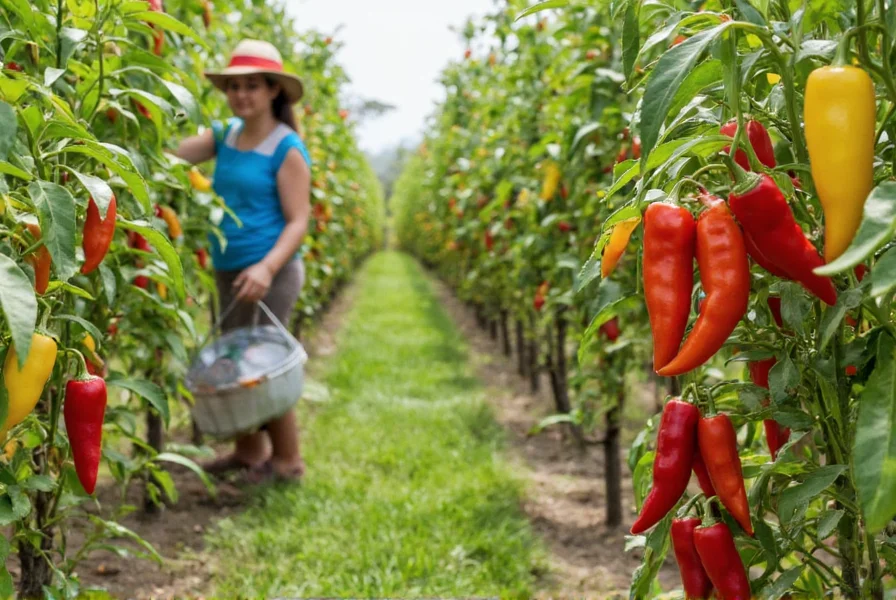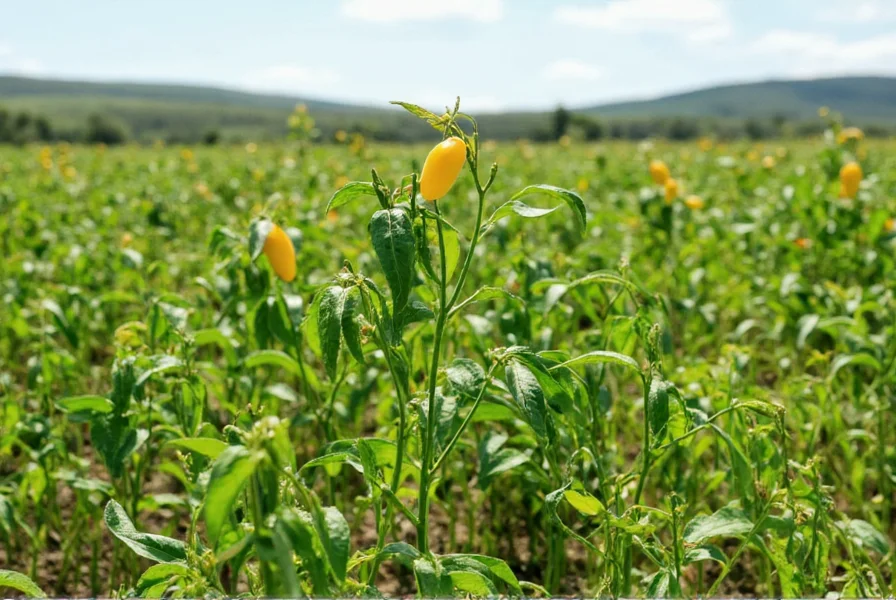Pepper farming represents a significant segment of global vegetable production, with commercial operations ranging from small family farms to large-scale agricultural enterprises. Understanding the fundamentals of pepper cultivation helps both aspiring farmers and consumers appreciate the complexity behind these vibrant, flavorful crops that grace tables worldwide.
Understanding Pepper Varieties in Commercial Farming
Commercial pepper farms typically cultivate multiple varieties to meet diverse market demands. The Capsicum annuum species dominates production, including:
| Pepper Type | Scoville Units | Primary Uses | Harvest Timeframe |
|---|---|---|---|
| Bell peppers | 0 SHU | Fresh consumption, cooking | 60-90 days after transplanting |
| Jalapeños | 2,500-8,000 SHU | Canning, sauces, fresh | 70-80 days after transplanting |
| Habaneros | 100,000-350,000 SHU | Hot sauces, specialty products | 90-120 days after transplanting |
| Cayenne | 30,000-50,000 SHU | Drying, powder production | 70-100 days after transplanting |
Specialty varieties like shishito, padrón, and ghost peppers have gained popularity in recent years, creating new market opportunities for diversified pepper farming operations. Successful commercial pepper farming requires understanding each variety's specific growth requirements, disease resistance, and market value.
Optimal Growing Conditions for Pepper Farms
Peppers thrive in warm climates with specific environmental requirements. The ideal temperature range for most commercial pepper varieties is 70-85°F (21-29°C) during the day and 60-70°F (15-21°C) at night. Temperatures below 55°F (13°C) or above 90°F (32°C) significantly reduce fruit set and quality.
Soil requirements for successful pepper cultivation include:
- Well-drained loamy soil with pH between 6.0-6.8
- High organic matter content (minimum 2-3%)
- Adequate calcium to prevent blossom end rot
- Proper nitrogen-phosphorus-potassium balance
Irrigation management proves critical in commercial pepper farming. Drip irrigation systems have become standard practice, delivering precise water amounts directly to root zones while minimizing disease risk from overhead watering. Most pepper varieties require consistent moisture, particularly during flowering and fruit development stages.
Commercial Pepper Farming Techniques
Modern pepper farming operations employ several specialized techniques to maximize yield and quality:
Transplanting vs. Direct Seeding: Most commercial operations start with transplants to extend the growing season, especially in regions with shorter warm periods. Seedlings typically grow in controlled environments for 6-8 weeks before field transplantation.
Row Spacing and Plant Density: Optimal spacing varies by variety but generally ranges from 18-24 inches between plants with 36-48 inches between rows. High-density planting increases yield per acre but requires careful disease management.
Pest and Disease Management: Integrated Pest Management (IPM) approaches combine cultural practices, biological controls, and targeted pesticide applications. Common pepper farm challenges include aphids, thrips, spider mites, and diseases like bacterial spot and phytophthora blight.

Economic Considerations in Pepper Farming
Establishing a profitable pepper farm requires careful economic planning. Initial investment costs include:
- Land preparation and soil amendments: $500-$1,000 per acre
- Seedlings or seeds: $200-$400 per acre
- Irrigation system installation: $1,500-$3,000 per acre
- Labor costs for planting and harvesting: $800-$1,500 per acre
Revenue potential varies significantly based on market channel, variety, and yield. Wholesale prices typically range from $0.50 to $2.00 per pound, while specialty varieties sold directly to consumers can command $3.00-$8.00 per pound. Successful pepper farming operations often diversify their markets across fresh produce, processing contracts, and value-added products.
Sustainable Practices in Modern Pepper Farming
Environmental stewardship has become increasingly important in commercial agriculture. Progressive pepper farms implement sustainable practices including:
Soil Health Management: Cover cropping with legumes, reduced tillage practices, and compost applications maintain soil structure and fertility while reducing erosion.
Water Conservation: Precision irrigation technologies, moisture sensors, and scheduling based on evapotranspiration data minimize water usage without compromising crop quality.
Biodiversity Enhancement: Incorporating flowering plants around field edges creates habitat for beneficial insects that naturally control pest populations, reducing pesticide dependency.
Many pepper farming operations now pursue third-party certifications like USDA Organic, GlobalGAP, or Food Alliance to meet consumer demand for responsibly grown produce and access premium markets.
Challenges Facing Pepper Farmers
Commercial pepper farming presents several challenges that require ongoing management:
- Climate vulnerability: Peppers are sensitive to temperature extremes and irregular rainfall patterns
- Labor availability: Harvesting requires skilled manual labor, which has become increasingly difficult to secure
- Market fluctuations: Price volatility affects profitability, especially for single-crop operations
- Disease pressure: Pathogens can devastate crops if not properly managed
Successful pepper farming operations address these challenges through diversification, technology adoption, and building strong market relationships. Many farms now incorporate high tunnels or greenhouse production to extend seasons and protect crops from environmental extremes.
Getting Started with Pepper Farming
For those considering starting a pepper farm business, thorough planning proves essential. Begin with market research to identify viable pepper varieties and potential buyers. Conduct soil tests to determine necessary amendments before planting. Start with a manageable acreage to refine techniques before expanding. Connect with local agricultural extension services for region-specific advice on pest management and variety selection.
Many new pepper farming operations begin with a few high-value specialty varieties before expanding their crop portfolio. Building relationships with chefs, farmers' markets, and local grocery stores creates reliable sales channels while minimizing marketing costs.
Conclusion
Pepper farming combines agricultural science with market awareness to produce these versatile and valuable crops. Successful operations understand the specific requirements of different pepper varieties, implement sound cultivation practices, and adapt to changing market conditions. Whether operating a small specialty farm or a large commercial operation, pepper growers contribute significantly to the global food system while providing consumers with nutritious, flavorful options. As consumer interest in diverse pepper varieties continues growing, the future of commercial pepper farming appears promising for those who prioritize quality, sustainability, and market responsiveness.











 浙公网安备
33010002000092号
浙公网安备
33010002000092号 浙B2-20120091-4
浙B2-20120091-4